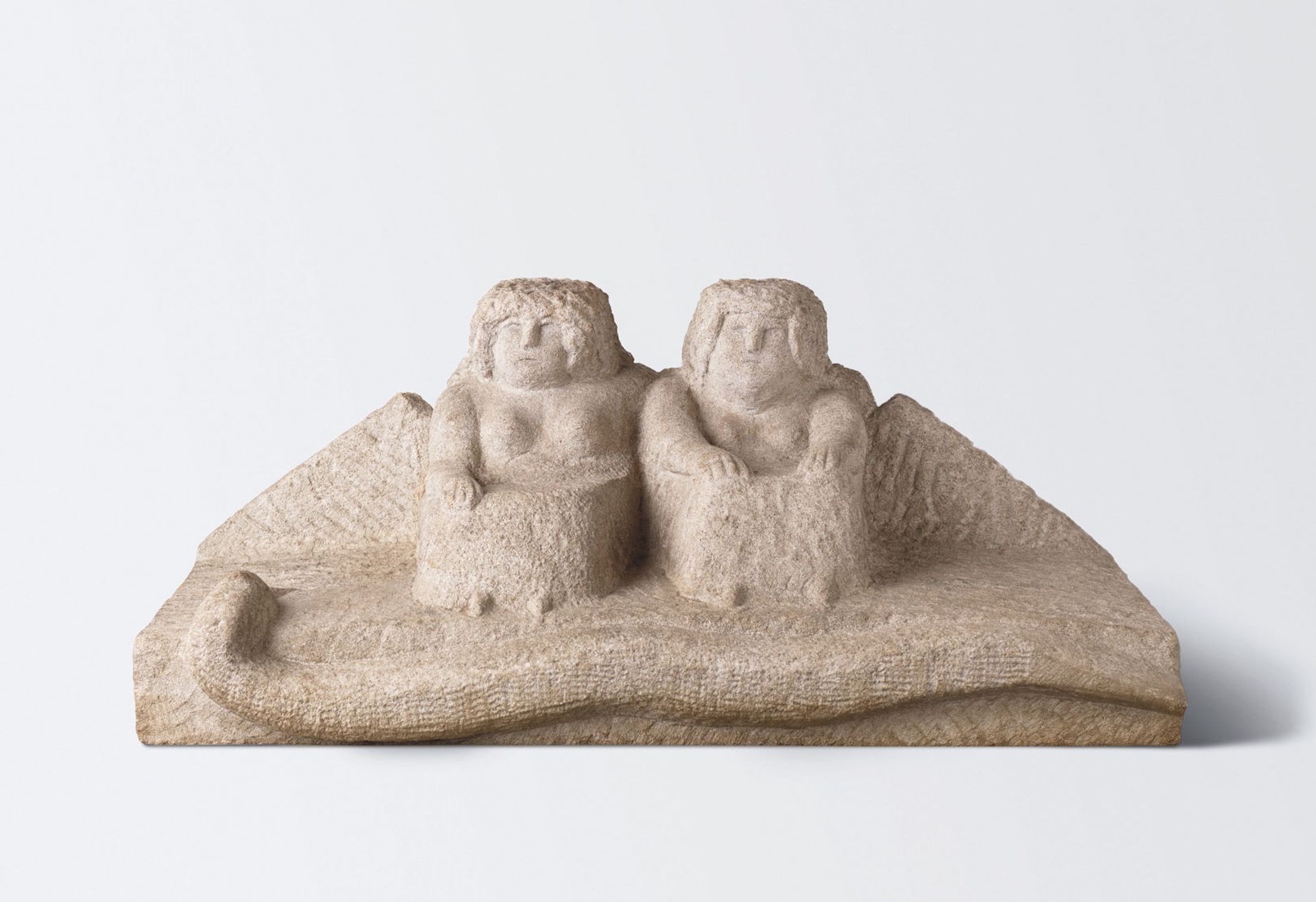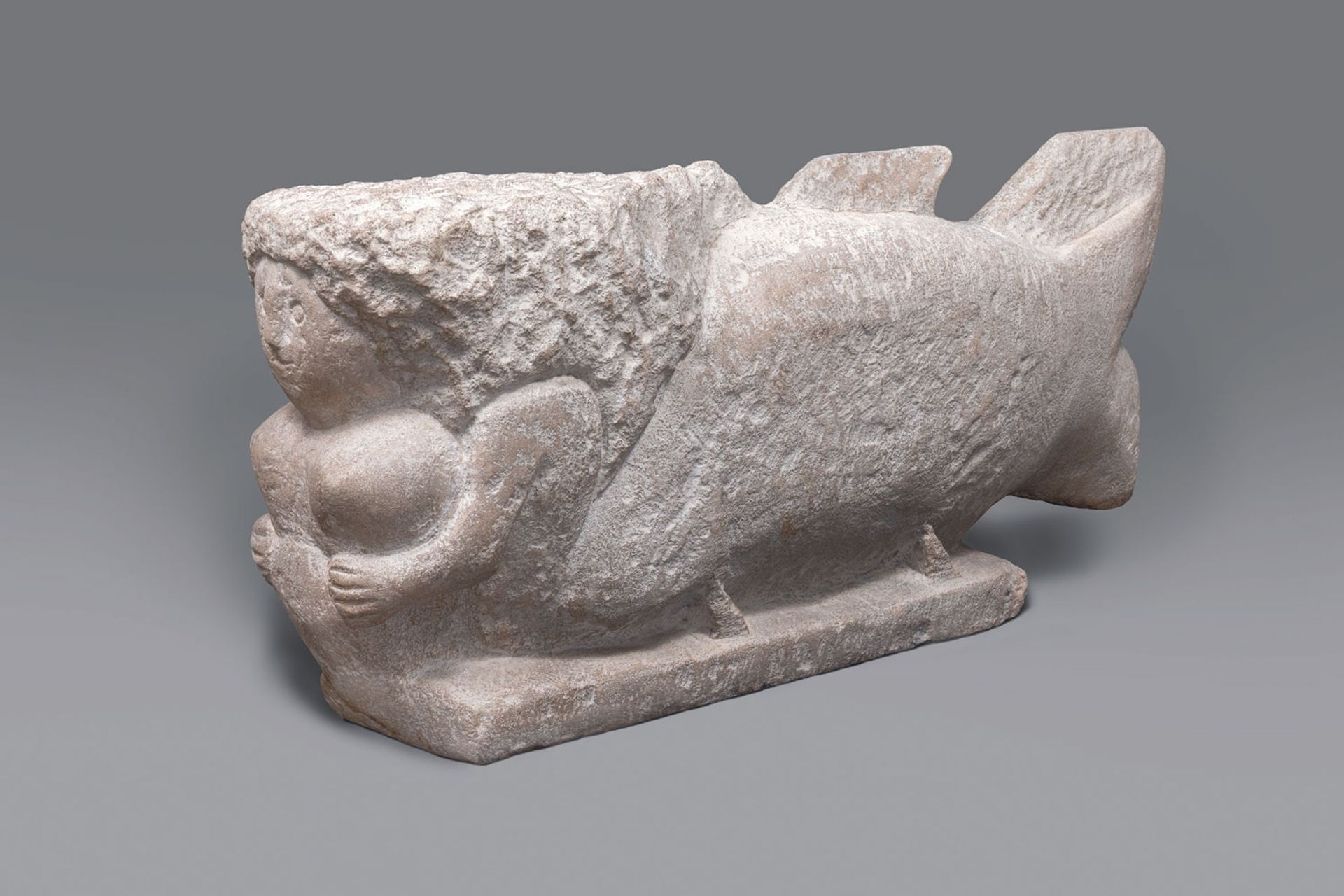Stoneworkers in Nashville, Tennessee made frequent deliveries to the home of William Edmondson (1874-1951). Those from the nearby quarry brought him oddly shaped stones, unusable for the builders; others brought leftover cobblestones, selling them to Edmondson to store his outdoor studio-turned-yard. There, the self-taught modernist sculptor inserted his visions into these distorted blocks, turning them into angels, animals, tombstones and at least a portrait of Jim Crow-era heavyweight boxing champion Jack Johnson.
NOW William Edmondson: A Monumental Vision, at the Barnes Foundation in Philadelphia, will attempt to carve out a more solid place in art history for his sculptures. When Edmondson exhibited at New York’s Museum of Modern Art (MoMA) in 1937 as the first black artist to be granted a solo exhibition, he was cast as a naïve, untrained folk artist; this exhibition will honor his unique contributions to modernism and present his work in the context of his life in Nashville.

Ancient Egyptian couple (formerly Adam and Eve) (circa 1940) by William Edmondson Courtesy of Museum of Everything, London
Over 60 works by Edmondson on loan from institutional and private collections will be on display, including several sculptures from the personal collection of contemporary artist and folk art collector KAWS. The exhibition will also include photographs of Edmondson taken by Louise Dahl-Wolfe and Edward Weston in the 1930s and 1940s, the artist’s most active period. To mark the “complex relationship between black cultural production and the American museum,” according to organizers, a specially commissioned performance by classically trained artist and dancer Brendan Fernandes will be staged weekly in the exhibition space.
Edmondson began his career as a sculptor carving headstones for black people buried in separate cemeteries, first creating block figures resembling the rough rectangular limestone slabs. His style changed over time and by the late 1930s he was sculpting figures with greater three-dimensionality, in more complex compositions. As Edmondson began to attract the attention of collectors such as Abby Aldrich Rockefeller, he made fewer tombstones and concentrated on more decorative carvings.
“He channeled his intellectual prowess into creating a very different modernism – inspired by an African-American perspective – that was marginalized in his time and still despised today,” writes art historian Leslie King-Hammond in the exhibition catalogue. “He created images that not only advanced the cause of aesthetic excellence, but also recognized and recorded the historical legacy of African-American religious life and beliefs in a way that had not been experienced in the world of traditional art.”

Edmondson Mermaid (1932-41) Collection of Dr. Robert and Katharine Booth
Edmondson sculpted many animals, such as squirrels, rabbits, lions, and rams, and occasionally commemorated public figures such as U.S. First Lady Eleanor Roosevelt. He had “a powerful sense of fantasy,” says co-curator Nancy Ireson, which he expressed using “an economic sense of line.”
“Here are miracles I can do,” Edmondson said in the 1937 press release for his MoMA exhibit. “No one can do this but me.”
• William Edmondson: a monumental visionBarnes Foundation, Philadelphia, June 25-September 10
